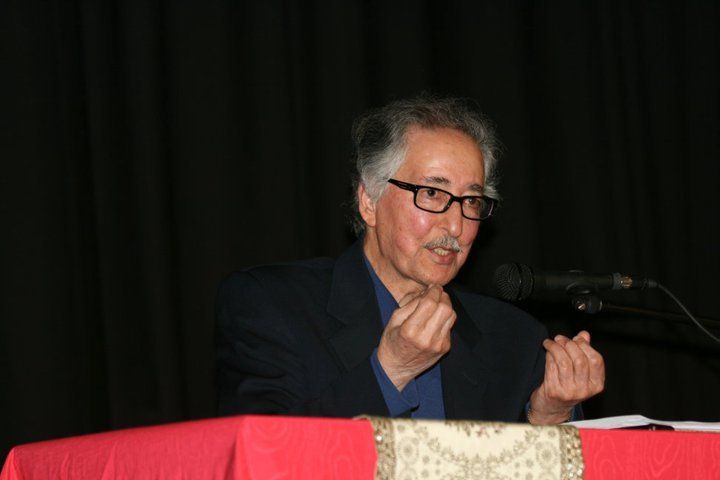
A permanent state of crisis has intersected with the Supreme leader’s actions to create conditions for the emergence of a new ‘post-reformist’ conjuncture. Could this lead to a paradigm shift in Iran?
A historical conjuncture is a ‘period during which the different social, political, economic and ideological contradictions that are at work in society come together to give it a specific and distinctive shape’ – and provide conditions for a new state of social affairs.
For example, the coming together of BREXIT, a failed coup by New Labour MPs against Jeremy Corbyn and the general hostility of the media against him provided the Conservative Party with a tremendous lead over Labour. With an effective electoral machine behind Theresa May, the party portrayed the opposition leader "as an amusing, eccentric joke that could be squashed like a fly that had already had its wings ripped off."
Unlike Corbyn, however, May failed to realize that she was representing and defending a failed neo-liberal economy which, having been forced upon people for years in the form of ‘austerity’, has created simmering discontent.
Society is in such a state of crisis that many people are now questioning the neo-liberal mantra that ‘there is no alternative.’ Corbyn presented an alternative, which the Tories believed to be dead. The rest, as they say, is history.
A new historical conjuncture in Iran
This is not the only interesting conjuncture emerging. Not long after Jeremy Corbyn became the undisputed leader of the Labour Party, political circumstances also unexpectedly shifted in Iran. Political contradiction is not new here. Because of an intrinsic contradiction within the Iranian constitution, there are always tensions between the unelected ‘supreme leader’ and the ‘elected’ president. These are usually ignored or made invisible by the subservience of the president to the leader.
However, after the May 2017 presidential election, president-elect Rouhani realized that he would be unable to fulfill his campaign promises due to increasing economic and political interference from the Revolutionary Guards, which he has called an ‘armed government.’
As the country’s economy deteriorates faster and is accompanied by looming environmental catastrophe (desertification, an unprecedented fall of the underground water tables, the drying up of rivers and lakes, mainly due to mismanagement and the ‘water mafia’ controlled by the Revolutionary Guards), so does his frustration.
In addition, Supreme Leader Khamenei has been trying to pave the way for his son, Mojtaba, to succeed him. He believes this will maintain his policy of crisis-creation in order to create a ‘Shia belt’ across the Middle East. As this presented an existential threat to the county, Rouhani decided that enough was enough and indirectly challenged both the guards and Khamenei’s efforts to appoint his son.
He invoked the early history of Islam, arguing that Imam Ali, the Fourth Kalif and first Shia imam, became a leader through people’s will and consensus. He referred to Ali’s famous statement that he would never have accepted the leadership without the people’s consent and that he would remove himself as soon as this consent wanes.
This matters in Iran, as it challenges the concept of ‘velayate-motlageh-faqih’ (the absolute rule of a jurist), which asserts that the leader is chosen by God through appointment (not elected) and the only task of the Council of Experts is to discover such an appoitnment - this is the linchpin of the Iranian regime.
Rouhani’s challenge alarmed Khamenei, who warned Rouhani that if he did not observe this line he would have the destiny of Banisadr, Iran’s first president, who was said to have polarized society to the extent he had to be removed.
Who was Banisadr?
Abolhassan Banisadr was the first elected president of Iran after the 1979 Revolution. The struggle that ensued between him and the Islamic Republican Party (IRP) and its allies became an open struggle between freedom and despotism within the government.
Ayatollah Khomeini openly sided with the IRP, Banisadr then warned people to resist: “what is important is not the elimination of the president, but the fact that the demon of despotism and oppression once again wants to impose itself upon you, the people, and to make the effect of the precious blood of those, which was shed for Islam and freedom, worthless.”[1]
This standoff ultimately ended in a coup against the president in June 1981, which became the stolen narrative of the Iranian revolution.
‘Fire at will’
Shortly after Khamenei threated a similar fate for Rouhani in June of this year, he also instructed his supporters to ‘fire at will’, giving them a green light to openly challenge the president.
At the annual Jerusalem Day demonstration, many of Khamenei’s supporters indeed surrounded the president, chanting: "Rouhani, Banisadr, happy union!" This was the first time the name of Banisadr had been chanted in the streets of Iran since June 1981. In order to remove the memory of Banisadr from the people’s memories, even the chant "death to Banisadr" had been forbidden.
This action quickly spread across the country, creating a tsunami of interest among people, especially the young. Social media began buzzing with questions about Banisadr and the reasons for his dismissal. People asked: if Khamenei has turned against Rouhani for saying that Iran’s leader should be elected rather than appointed, had Khomeini turned against Banisadr for the same reason? This gave the older generation new opportunities to share their memories of the president and what he stood for.
In a short period of time, people’s views about Banisadr began to transform to such an extent that a famous historian, Hussein Dehbashi, tweeted: “To draw similarity between Banisadr and Rouhani, will not make the latter infamous, but unintentionally, exonerate the former. After 35 years, everybody asks: Why?”
This sudden flurry of interest among young people terrified many of the elites within the regime. A former MP and a well-respected analyst, Mohammad Azad Jalali Zadeh, even wrote an article titled “To equate the president with Banisadr is a prelude to the Iranian version of the Trojan (horse)”.
He argues that “a deep analysis of the contemporary political phenomenon, especially to liken the president, who has 24 million votes, to a member of the opposition outside of the country who intends to overthrow the regime, can be seen like the “Trojan horse”, waiting behind the castle of this land. If it continues, the gates will be opened and our land will become the land of the Trojan. Neither reformists nor the principlists, nor the sacrifices of the youth in this memorable land, will last in the land of the Iranian Trojan. All will be harmed and Iran and the Iranians will suffer destruction. We should not forget this.”
Being alarmed and not knowing how to react, the regime’s elites were confused and divided. Many decided to stay quiet, as further talk about Banisadr would only increase young people’s curiosity. Many others have tried to protect their own positions by continuing to defend the negative narrative about Banisadr, which has circulated for 37 years. They all realize that if the tide rises, they (and their privileges) will be the first to be washed away.
A consensus was therefore reached to stop talking about Banisadr. But this was broken by a big bang when, during a live broadcast of Friday Prayer in Tehran, Mohsen Eje'i, Deputy Chief Justice of Iran, implicitly criticized Rouhani by explicitly attacking Banisadr, calling the latter an arrogant, overbearing leader who had been opposed to the newly founded ‘revolutionary institutions’ in the early post-revolutionary period.
The next day, after sixteen years of waiting, an extensive interview with Banisadr in which he responds to many of the accusations made against him since the 1981 coup was published. Hundreds of thousands of people saw and heard this interview within days on social media, and many asked to see the interview in its entirety. An unprecedented flurry of comments and tweets praising the former president ensued.
Returning to the question of the conjuncture, we turn to the critical cultural theorist Stuart Hall, who once argued that “history moves from one conjuncture to another rather than being an evolutionary flow. And what drives it forward is usually a crisis, when the contradictions that are always at play in any historical moment are condensed.”
In the Iranian context, a permanent state of crisis has intersected with the Supreme leader’s actions to create conditions for the emergence of a new ‘post-reformist’ conjuncture. This will not lead to a ‘paradigm shift’ if Rouhani fights and forces his opponents to step back. If this happens, we will see something like the state of crisis that shadowed the last years of Margaret Thatcher, which did not lead to a major shift but to the premiership of another Tory prime minister, John Major, who continued Thatcher’s policies in a relatively less repressive way.
If Rouhani gives in and submits to the Supreme leader, then the next social movement already has at least one speaker waiting in the wings. The possibility that this could create a home-grown and dynamic democracy in an independent Iran cannot be overestimated. In any case, the genie is out of the bottle.
[1] Seyed Abdolkarim Mousavi Ardebili, ed., Ghale chahardeh esfand [The Crisis of Fourteen Esfand] (Tehran: Nejat Publishing Co., 1364 [1985]), p. 680.
